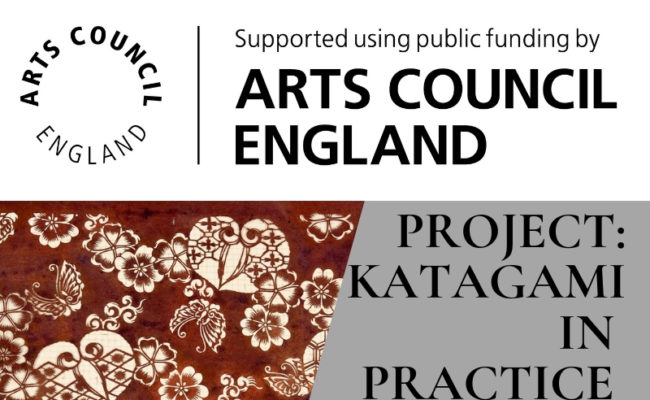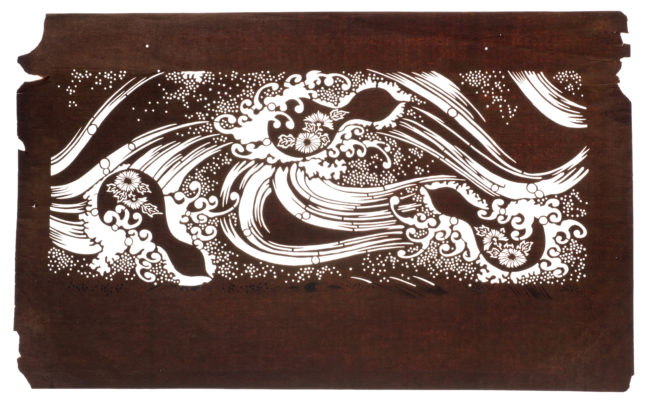Tessen (Clematis) and Chou (Butterfly) katagami design
Brief description
Tessen (Clematis) and Chou (Butterfly) katagami design, 1850-1880
Date
1850-1880
Dimensions
height: 307mm
width: 411mm
stencil height: 211mm
stencil width: 359mm
More details
This Katagami has ‘Gara boshi’, cut out signs, indicating that it is part of a set, usually two, called ‘Nimai-gata’. Both Katagami will have identical 'Gara boshi'. Both are needed to dye the complete design. These were used frequently around late Edo period (1780-1867). The other Katagami in the pair does not exist in the Silver Silver collection. The design features two elements, 'Tessen' and 'Chou'. The flower of Tessen (Clematis) has a graceful appearance with its thin stalk; the pattern is often similar to Karakusa designs. Tessen were popularly used in the costumes of Oiran Geisya. Wearing second-hand Tessen kimonos were popular among common people during the Edo period (1603–1868). Chou (Butterfly) is one of the most popular patterns in Japanese culture, often seen on Japanese Kimonos and textiles. For the Japanese people, from the past to present, the butterfly has many spiritual, symbolic and a artistic meanings. When the era of Ukiyo-e woodblock cuts came along during the middle to the late of Edo period (1692-1868), the butterfly quickly became a popular subject for the Ukiyo-e artists. Many Ukiyo-e butterfly design Kimono prints were produced by the artists, which in turn promoted the pattern for Oiran geisha costumes. This is one of around 400 Japanese katagami stencils which are part of the Silver Studio Collection. The stencils were produced in Japan as a way of applying patterns to fabric, mainly kimonos. The katagami collected by the Silver Studio were used by their designers as reference material to produce their own Japanese-inspired patterns.





Comments